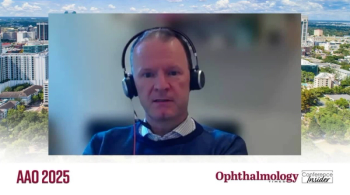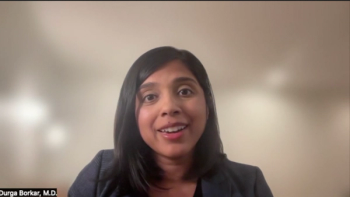
Ocular issues unique in combat
Most aspects of ocular trauma are unique when practicing in a combat environment.
Key Points
Philadelphia-Most aspects of ocular trauma are unique when practicing in a combat environment, said Mark L. Nelson, MD, here at the Macula 2011 and Atlantic Coast Retina Club meeting of the Wills Eye Institute.
"Many soldiers survive previously lethal injuries due to strong protection to the chest and abdomen from body armor," said Dr. Nelson, Colonel, Medical Corps, U.S. Army, and chief of Retina Service, Madigan Army Medical Center, Fort Lewis, WA. "While ballistic eye protection is helpful, the face and eyes act as a bumper for the brain, resulting in horrific injuries that are still survivable."
Dr. Nelson, who is also assistant professor, Uniformed Services University of Health Sciences, Bethesda, MD, was the solo eye surgeon at the Theater Evacuation Hospital in Balad, Iraq.
From July 2006 through October 2006, his surgical volume consisted of 114 major ophthalmic injuries, 62 open globes (32 of which were enucleated primarily). Dr. Nelson said that as many as five open globes could come in at once.
Improvised explosive devices (IEDs) are exceptionally destructive to the eye, he said.
Injuries were incurred by IEDs (open globes from shrapnel), high-velocity gun shot wounds, hand grenades/rocket-propelled grenades, and closed-globe trauma from severe blast force of IED explosions even without shrapnel.
During combat, eye exams can take on some unique aspects, he continued. For example, they were often unable to determine vision due to anesthetized and intubated soldiers being too severely injured to respond.
"This makes it difficult to decide on enucleation versus globe closure," he said.
From the retina surgeon's perspective, a posterior segment exam consists of dilating the eye whenever possible. This is the best opportunity to see the status of the retina. It may be possible to avoid unnecessary globe exploration-if the posterior segment is visible and normal, there is no need to explore the globe.
When there is no view of the fundus, Dr. Nelson said, computed tomography scans are invaluable for locating intraocular foreign bodies (IOFBs) and planning the surgical approach.
Blast injuries can cause traumatic mydriasis with or without ruptured or open globes. Further, anesthetized and intubated patients are often being treated with succinylcholine. Their pupils may be highly constricted, and afferent pupillary defects are very difficult to assess. In combat, surgeons are grouped into head and neck surgical teams. These teams comprise two neurosurgeons, one ENT surgeon, two ophthalmic surgeons, dedicated nurses, anesthetists, and operating room (OR) techs.
"Many soldiers have concomitant eye, facial, and neurosurgical injuries; a team approach is invaluable," Dr. Nelson said.
"It is imperative that the eye surgeon operate quickly and simultaneously with other surgeons," he added.
Newsletter
Don’t miss out—get Ophthalmology Times updates on the latest clinical advancements and expert interviews, straight to your inbox.





















































.png)


